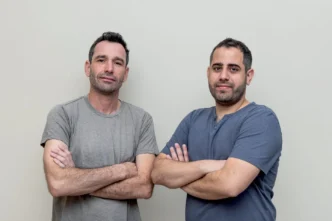The founder walked into the investor meeting confident in their forecasting and their pitch.Maybe a little too much. Their deck was polished. The story had punch. And when the numbers slide came up, they dropped the line that founders love to say:
“The market is worth $4 billion. If we just capture 2.5%, we’ll hit $100 million in revenue within four years.”
Then came the pause.
Not the good kind.
The investors nodded. Asked a few polite questions. Wrapped it up with a quick handshake and the classic “we’ll be in touch.”
Walking out, bag over the shoulder, the founder felt uneasy. The logic made sense. The numbers added up. So why didn’t it land?
Here’s why: the pitch leaned on a top-down forecast—the kind that starts with market size and works backward to revenue. And while it may sound strategic, experienced investors see it as a red flag.
Top-down forecasting is easy to build, but tough to believe. It skips over the messy, essential stuff—how you’ll actually sell.
Why Bottom-Up Forecasting Builds Trust
Top-down thinking starts with the dream. But bottom-up forecasting starts with execution.
A top-down model says, “Here’s the size of the prize, now let’s imagine we win a slice.” It sounds ambitious but glosses over how. Where are the leads coming from? What’s the conversion rate? Who’s selling? What’s the cost?
A bottom-up forecast flips the script. It begins with what you know: how many people you can reach, how fast your team can grow, what each deal is worth, and how much it costs to close one. It’s not a dream—it’s a plan.
Investors Spot the Difference
The moment you say, “If we just get 1% of the market…” most seasoned investors tune out. That phrase tells them you haven’t done the work to figure out how hard it actually is to win customers.
But when you walk them through a forecast grounded in CAC, LTV, team ramp-up, churn, and pricing? You’re speaking their language. You’re not just ambitious—you’re operationally sound.
Adaptability Beats Assumptions
Top-down models often assume a straight-line path to growth. They rarely account for real-world friction—team bandwidth, budget constraints, shifting market dynamics.
A strong bottom-up model is flexible. It lets you test assumptions, tweak inputs, and see exactly how changes impact the outcome. Want to model what happens if churn drops? Or if you raise more and double your sales team? A bottom-up forecast lets you do that instantly.
More importantly, it shows you’re ready for the messy middle—not just the glory of the end game.
So, Is Top-Down Ever Useful?
Maybe. But only as a gut check. Use it to make sure your bottom-up forecast isn’t somehow bigger than the entire addressable market. (Which, let’s be honest, is rarely the case.)
In short: if you want investors to believe your numbers, build from the ground up. Show them you know how the engine works—and how you’ll scale it.
Because great forecasts don’t come from bold assumptions. They come from believable execution.













